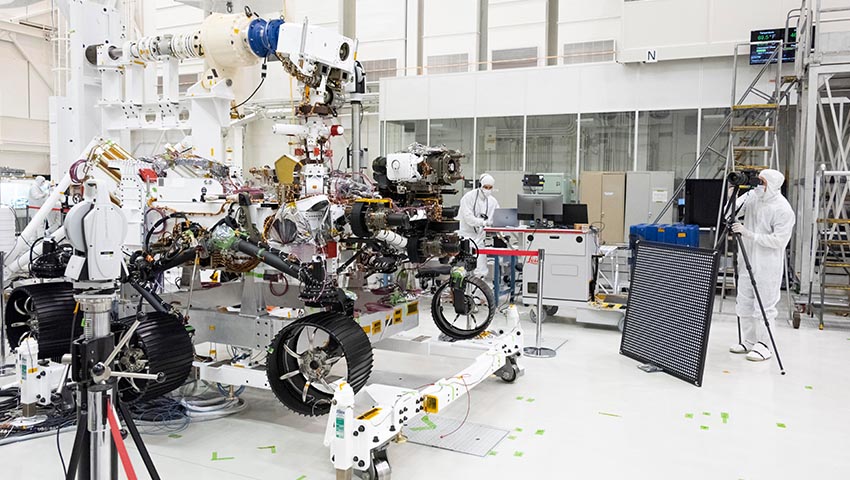Perseverance received its six flight wheels on 30 March 2020. While the rover took a test drive last December, it was on "flight spares" that wouldn't be making the trip to Mars.
Designed for the kind of off-roading Perseverance will perform on the Red Planet, the wheels are re-engineered versions of the ones NASA's Curiosity has been using on its traverses of Mount Sharp.
Machined out of a block of flight-grade aluminium and equipped with titanium spokes, each wheel is slightly larger in diameter and narrower than Curiosity's, with skins that are almost a millimetre thicker.
They also feature new treads, or grousers: in place of Curiosity's 24 chevron-pattern treads are 48 gently curved ones.
Extensive testing in the Mars Yard at NASA's Jet Propulsion Laboratory, which built the rover and manages operations, has shown these treads better withstand the pressure from sharp rocks and grip just as well or better than Curiosity's when driving on sand.
The job of adding Perseverance's parachute to the back shell, where the rover will be stowed on the journey to the Red Planet, took several days and was finished on 26 March.
Tasked with slowing the heaviest payload in the history of Mars exploration from Mach 1.7 to about 320km/h during the rover's landing on 18 February 2021, the 88 kilograms of nylon, Technora and Kevlar fibers are packed so tightly into a 50-centimetre-wide aluminium cylinder that it is as dense as oak wood.
When deployed at about 11 kilometres above the Martian surface, the chute will take about a half-second to fully inflate its 21.5-metre-wide canopy.
The Perseverance rover is a robotic scientist weighing 1,025 kilograms.
It will search for signs of past microbial life, characterise the planet's climate and geology, collect samples for future return to Earth, and pave the way for human exploration of the Red Planet.
No matter what day Perseverance launches during its 17 July-5 August launch period, it will land on Mars' Jezero Crater on 18 February 2021.
Perseverance is part of a larger program that includes missions to the moon as a way to prepare for human exploration of the Red Planet.
Charged with returning astronauts to the moon by 2024, NASA will establish a sustained human presence on and around the moon by 2028 through NASA's Artemis lunar exploration plans.

